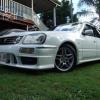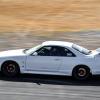Good Timing Belt
Announcements
-
Similar Content
-
Latest Posts
-
That sounds like an excellent idea. But total self-sufficiency means exactly that. You have no-one else to blame when your system faults out and you have no power for a week or two while it gets fixed. You'd have to go the whole hog and get a diesel genny and all the switchover gear, to get you through such times. And, despite the fact that over 20 years, my system has been pretty reliable**, I have seen so many inverter explosions (or less dramatic deaths), panel and roof JB fires, and so on, over that time, to know that the stuff is the same as any other bulk Chinese manufactured stuff. The failure rate is well above zero - both on the equipment and on behalf of the meth addled installation labour force. And then..... warranty and means of redress against the supplier you bought the gear from. Best I can tell is that only a handful of solar companies are still around within 5 years of starting their advertising pitch. They disappear and phoenix like crazy. So, as per 1st paragraph, I suspect the only way to is go balls deep and spend maybe 2-3 times as much as you might think, so that you have every base covered. Plus, know and understand your gear intimately, so you can diagnose problems, sort them out yourself, etc, etc. Plus, probably have to consider upgrading various parts as the years pass, to maintain compatibility with newer stuff, performance and reliability, etc, etc. Whereas, remaining attached to the grid has an ongoing cost that keeps going up even if you use bugger all power from it. But it does provide the fallback in case of the worst case with your own gear. You either pay up front or as you go, I suspect.
-
Add more solar panels to the array. Call the electricity company and tell them you're moving out... Live off grid electric wise
-
I'm extremely suspicious of the VPP stuff. Best I can tell, you surrender any and all control of your panels and battery to the VPP, because there's no way that anyone could write a sufficiently useful set of "rules" as to how much you would be willing to let out of your export meter at any given time. If one of your main interests is to have enough in your battery every evening to get you through the night without having to import, you could easily find yourself with nothing in your battery at the end of the day, or part way through the night, and then be paying import pricing instead of paying nothing. I cannot see how this cannot come to pass.
-
majority aftermarket is an10 yes, but majority of OEM is An12 r35 OEM cooler lines at close to an 12, the hard line that car uses is almost 20mm Porsche OEM is also AN12 i figure, if our power levels are close to 1000hp, then AN12 should be a must if many OEM standard power vehicles use AN12
-




Recommended Posts
Create an account or sign in to comment
You need to be a member in order to leave a comment
Create an account
Sign up for a new account in our community. It's easy!
Register a new accountSign in
Already have an account? Sign in here.
Sign In Now